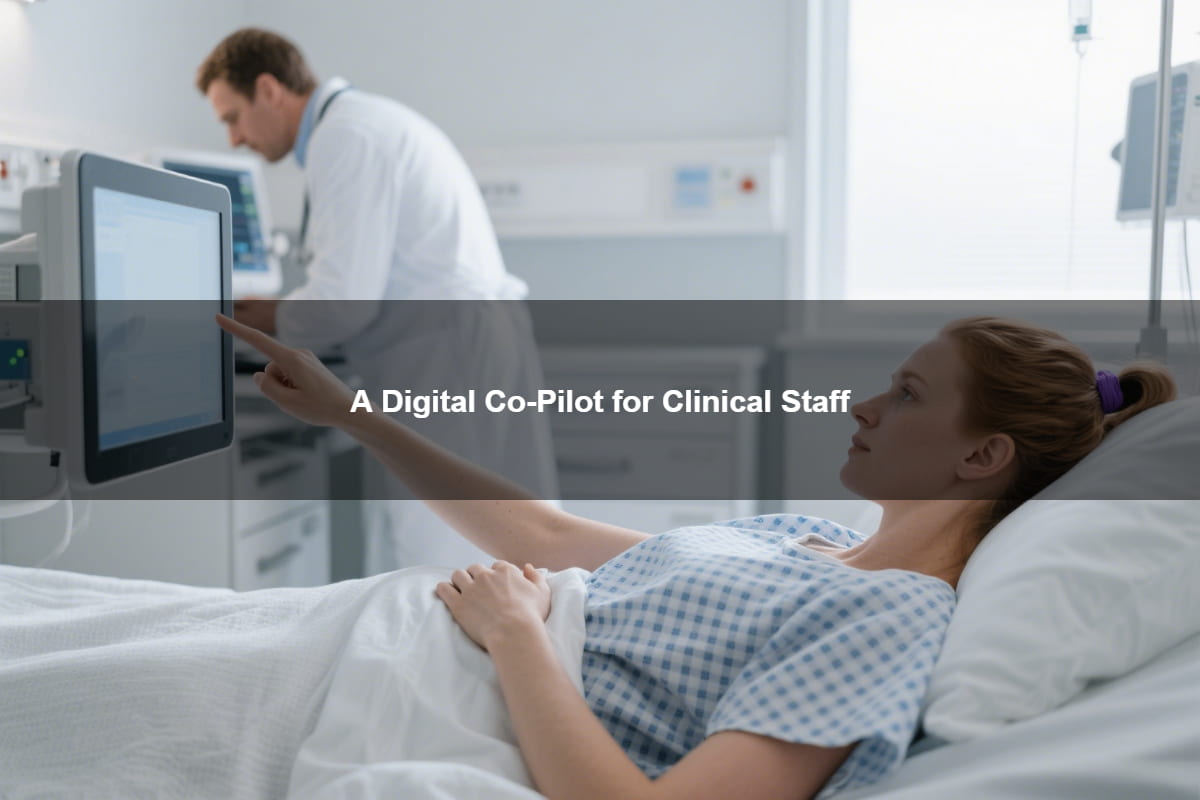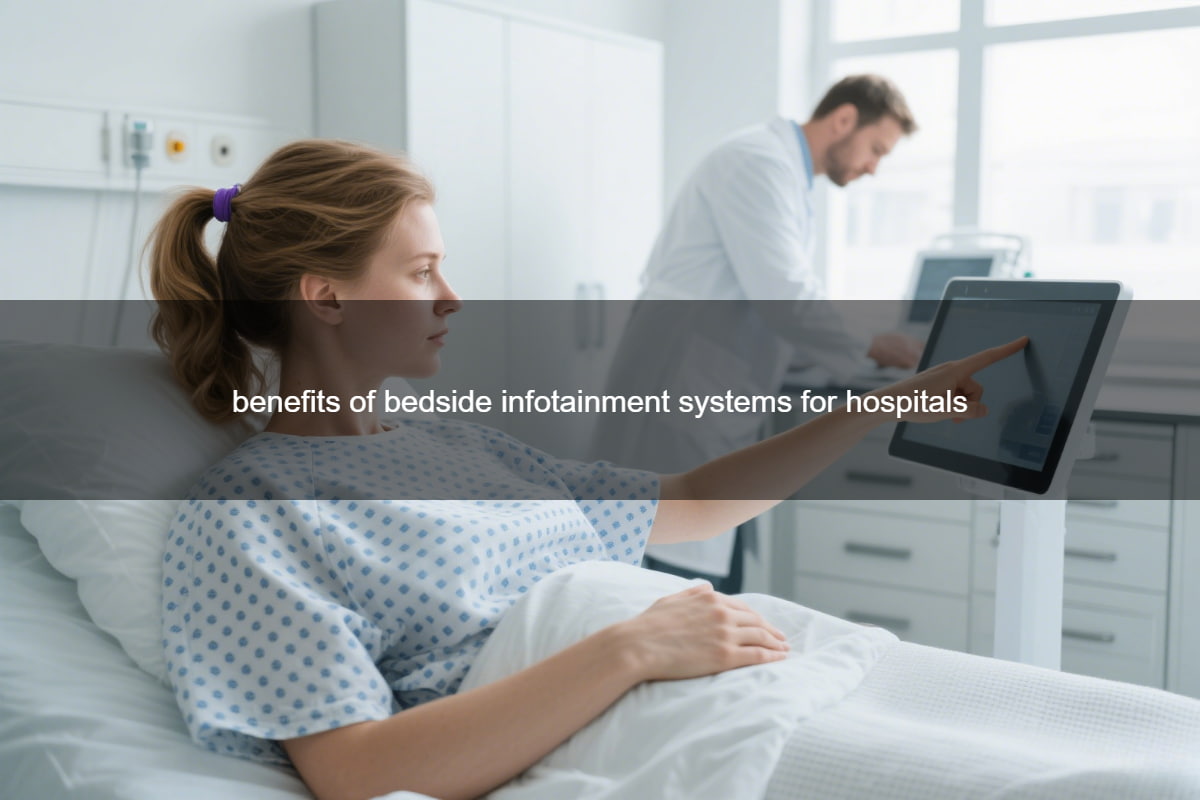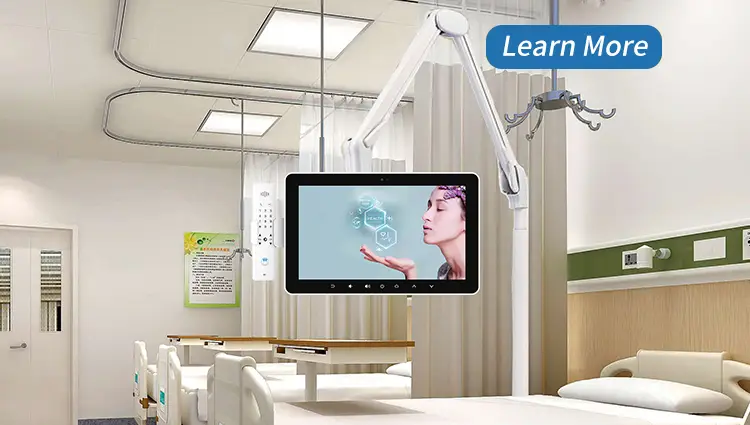The Hospital Stay of the Past
If you’ve ever spent time as a patient in a hospital, you know the feeling. The walls are sterile, the schedule is rigid, and the clock seems to slow to a crawl. For many, a hospital stay is defined by hours of staring at the ceiling, waiting for a nurse, or mindlessly flipping through the few available television channels.
But a fundamental shift is underway in patient care, driven by a new technology that’s far more powerful than a simple TV: the bedside infotainment system. While the name might sound like it’s all about entertainment, this platform is a sophisticated tool designed to empower patients, streamline clinical workflows, and improve the entire healthcare ecosystem. It’s no longer just about passing the time; it’s about making the patient an active participant in their own recovery.

1. A Revolution in the Patient Experience
At its heart, the bedside infotainment system is built to put the patient in control and provide genuine comfort. It transforms the sterile hospital room into a personalized space.
- A World of Entertainment at Their Fingertips: For a patient facing a long recovery, boredom and loneliness can be just as debilitating as their illness. These systems offer on-demand movies, TV shows, music, and games, which can significantly reduce anxiety and improve mood. This isn’t just a nicety; a more relaxed patient is often a more compliant and faster-recovering patient.
- Empowered by Information: A lack of clarity about one’s condition can be frightening. Modern systems allow patients to access their medical information directly, including lab results, treatment plans, and medication schedules. Even better, they can watch educational videos that explain their specific condition or post-operative care in simple, digestible terms. This patient education helps them feel more engaged and in control of their health journey.
- A Personal Command Center: Imagine a single device that lets you order a meal from the hospital menu, adjust the room temperature, dim the lights, and even call the nurse—all without having to press a button on a wall or search for a remote. These systems consolidate a patient’s essential needs into one easy-to-use interface, freeing them from the frustration of a fragmented experience.

2. A Digital Co-Pilot for Clinical Staff
The benefits of this technology are not just for patients. For the dedicated doctors and nurses on the front lines, the bedside system acts as a powerful ally, streamlining their day-to-day work and allowing them to focus on what matters most: patient care.
- Streamlined Workflows: Studies show that a significant portion of a nurse’s day is spent on non-clinical tasks, like answering requests for water or fetching a blanket. By allowing patients to manage these basic needs through the system, it drastically reduces the number of non-urgent nurse calls. This translates to more time for critical clinical duties, like administering medication or performing rounds.
- Improved Communication and Data Access: These systems integrate seamlessly with the hospital’s Electronic Health Record (EHR). A nurse or doctor can access a patient’s chart, vital signs, and treatment history right at the bedside. This instant, real-time access to information improves accuracy, reduces the chance of errors, and makes communication with the patient more efficient and informed.
- Enhanced Nurse Satisfaction: When nurses are freed from repetitive, low-priority tasks, their job satisfaction goes up. They feel more empowered and can spend more time on meaningful interactions with patients, which is the core reason most people enter the profession.

3. A Strategic Investment for Hospital Leadership
For hospital administrators and C-suite executives, a bedside infotainment system is much more than a patient amenity—it’s a strategic asset that can impact the bottom line and long-term reputation.
- Boosting HCAHPS Scores: The Hospital Consumer Assessment of Healthcare Providers and Systems (HCAHPS) survey is a key metric for patient satisfaction and a driver of hospital funding. A positive patient experience, fueled by convenience, comfort, and education, directly contributes to higher HCAHPS scores. This is one of the most compelling benefits of bedside infotainment systems for hospitals.
- Operational Efficiency and Revenue: By reducing the time nurses spend on non-clinical tasks, the system effectively optimizes staff utilization. Furthermore, some systems can be configured to offer premium, pay-per-view entertainment options or tele-consultation services, creating a new revenue stream for the hospital.
- Future-Proofing the Facility: As patient expectations evolve, hospitals must stay ahead of the curve. Investing in patient engagement technology in healthcare signals a commitment to innovation and provides a competitive advantage. It positions the hospital as a leader in compassionate, patient-centric care.

The Future Is Integrated
The future of these systems is even more exciting. Soon, they will likely become the central hub for a patient’s entire digital healthcare journey, connecting to their personal wearable devices to monitor vital signs, integrating with AI-powered health assistants to answer basic questions, and serving as a portal for telehealth consultations.
The bed is no longer just a place to rest. It’s becoming the heart of a patient’s personalized care ecosystem. Bedside infotainment systems are not a luxury—they are a necessity for any modern healthcare facility committed to improving every aspect of the patient, staff, and management experience.

